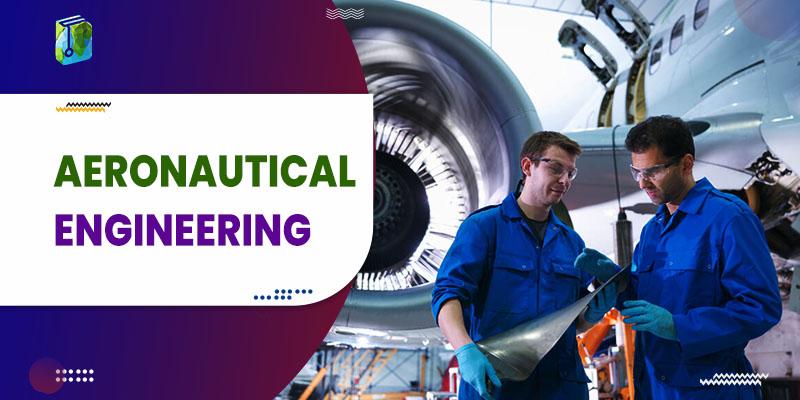Engineering in aeronautics is taxing due to its huge schedule, which requires carefulness and difficult work. Aeronautical Engineering is a notable part of the engineering that draws in candidates with enthusiasm for planes and their components. The essential duty of an Aeronautical Engineer is to devise airplanes and drive frameworks. However, with time, the specialist is given more duties to complete.
This course prepares a specialist in the planning, building, breaking down, and testing business or military airplanes, rockets, and shuttles. This science stream is associated with investigating, planning, and assembling flight-fit machines or the working methods of an airplane.
Plane design specialists are answerable for the exploration, structure, and creation of airplanes, shuttle, aviation gear, satellites, and rockets. They also grow new business flying advancements, protection frameworks, and space investigation.
Aeronautical Engineering
Aeronautical Engineering is one of the most well-known fields for the candidates who wish to make their profession in airplanes, planes, stream planes, and space transports. It is a profound investigation of “Aeronautics.”
Aeronautics term has originated from the old Greek word “Aer,” which signifies ‘Air’ and “Nautike,” which signifies ‘route of the air.’ Aeronautics is the quality of study of the assembling, planning, and investigating air flight proficient machines.
Be that as it may, fulfillment compensates for any student as it prompts a vocation with great compensations. An engineering certificate in Aeronautical Engineering causes one in a landing position in the flight industry and safeguards foundations and common avionics division. The normal pay of an aeronautical specialist is INR 6 lakhs or more. With experience, this pay scale increases.
Eligibility Criteria for Aeronautical Engineering
The candidates must fulfill the below-given requirements to be eligible to pursue Aeronautical Engineering:
Undergraduate (UG): The students interested in applying must have cleared the class XII examination from a recognized board with Science stream, i.e., Physics, Chemistry & Maths as their main subjects. The student must also have secured a minimum of 60% aggregate in the best of three, i.e., the above subjects combined.
Postgraduate (PG): The students interested in applying must have a B.Tech/BE degree in the same stream (same as the stream applied for postgraduation with a minimum aggregate which varies from university to university.
Sub-Domains under Aeronautical Engineering
- Aerodynamics and Fluid Dynamics
- Aerospace Propulsion
- Aircraft Structures and Materials
- Electronic Systems
- Ground Vehicle Systems
- Instrumentation And Communication
- Navigational Guidance and Control Systems
- Structural Analysis
- Structural Design and Engineering
- Transportation Systems
Top Aeronautical Engineering Colleges in India
- Indian Institute of Technology, IIT Bombay
- Indian Institute of Technology, IIT Kharagpur
- Indian Institute of Technology, IIT Madras
- Indian Institute of Technology, IIT Kanpur
Curriculum for Aeronautical Engineering
- Aero Engine and Airframe
- Aero Engineering Thermodynamics
- Aerodynamics
- Aerodynamics Laboratory
- Aircraft Design Project
- Aircraft Design Project
- Aircraft Materials and Processes
- Aircraft Structures
- Aircraft Structures
- Aircraft Structures Laboratory
- Aircraft Structures Laboratory
- Aircraft Systems and Instruments
- Aircraft Systems Laboratory
- Avionics
- CAD and Aircraft Component Drawing
- CAM and Manufacturing Laboratory
- Communication and Soft Skills- Laboratory-Based
- Composite Materials and Structures
- Computational Fluid Dynamics
- Computer-Aided Simulation
- Computer Practices Laboratory
- Computer Programming
- Control Engineering
- Elements of Aeronautics
- Engineering Chemistry
- Engineering Graphics
- Engineering Physics
- Engineering Practices Laboratory
- Environmental Science and Engineering
- Experimental Stress Analysis
- Finite Element Methods
- Flight Dynamics
- Flight Integration Systems and Control Laboratory
- Fluid Mechanics and Machinery
- Fluid Mechanics and Machinery Laboratory
- Manufacturing Technology
- Mathematics
- Mechanics of Machines
- Numerical Methods
- Physics and Chemistry Laboratory
- Principles of Management
- Propulsion
- Solid Mechanics
- Strength of Materials Laboratory
- Thermodynamics Laboratory
- Total Quality Management
- Transforms and Partial Differential Equations
- Vibrations and Elements of Aeroelasticity
- Wind Tunnel Techniques
What does an Aeronautical Engineer do?
- Aeronautical specialists configure, create, test, and help produce business and military airplanes, rockets, and shuttle.
- Aeronautical architects likewise create and structure unprecedented advancements, for example, supersonic planes, helicopters, space transports, satellites, and rockets.
- Work done by aviation design specialists has made such things as quick mail conveyance and space travel conceivable.
- Aeronautics designers are attempting to dispatch space transport to arrive at the moon.
Companies Hiring Aeronautical Engineers
- ADE
- Air India
- Civil Aviation department
- DRDL
- DRDO
- Flight clubs
- HAL
- Helicopter Corporation of India
- Indian Airlines
- ISRO
- NAL
- Private airlines
Best Books for Aeronautical Engineering
Here we have listed some of the best books available for Aeronautical Engineering. The candidates can check them out:
| Book | Author |
| Introduction to Aerospace Engineering with a Flight Test Perspective | Stephen Corda |
| Engineering Vibration | Daniel J. Inman |
| Fundamentals of Aerospace Engineering | Ali Baghchehsara, Francisco Gallardo Lopez, Jens Strahmann, Carol C. Haynes |
| Introduction to Unmanned Aircraft Systems, Second Edition | Douglas M. Marshall, Richard K. Barnhart, Eric Shappee, Michael Thomas Most |
| Optimal Control with Aerospace Applications | James M Longuski, José J. Guzmán, John E. Prussing |
| Powered Flight: The Engineering of Aerospace Propulsion | David R. Greatrix |
| Fundamentals of aerospace engineering: An introductory course to aeronautical engineering | Manuel Soler |
| Advanced UAV Aerodynamics, Flight Stability, and Control: Novel Concepts, Theory, and Applications | Pascual Marqués, Andrea Da Ronch |
| Aircraft Control Allocation
|
Wayne Durham, Kenneth A. Bordignon, Roger Beck |
Conclusion
Aeronautics term has originated from the old Greek word “Aer,” which signifies ‘Air’ and “Nautike,” which signifies ‘route of the air.’
Aeronautical Engineering is one of the most well-known fields for the candidates who wish to make their profession in airplanes, planes, stream planes, and space transports. It is a profound investigation of “Aeronautics.”
People are also reading:

